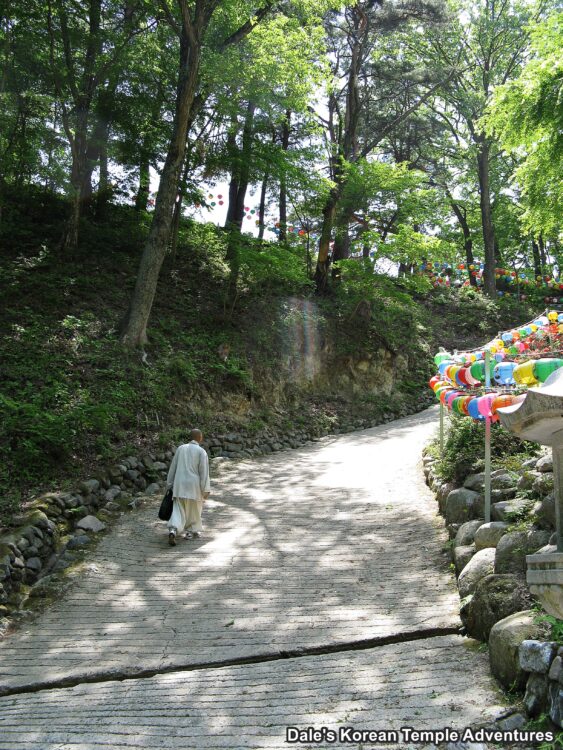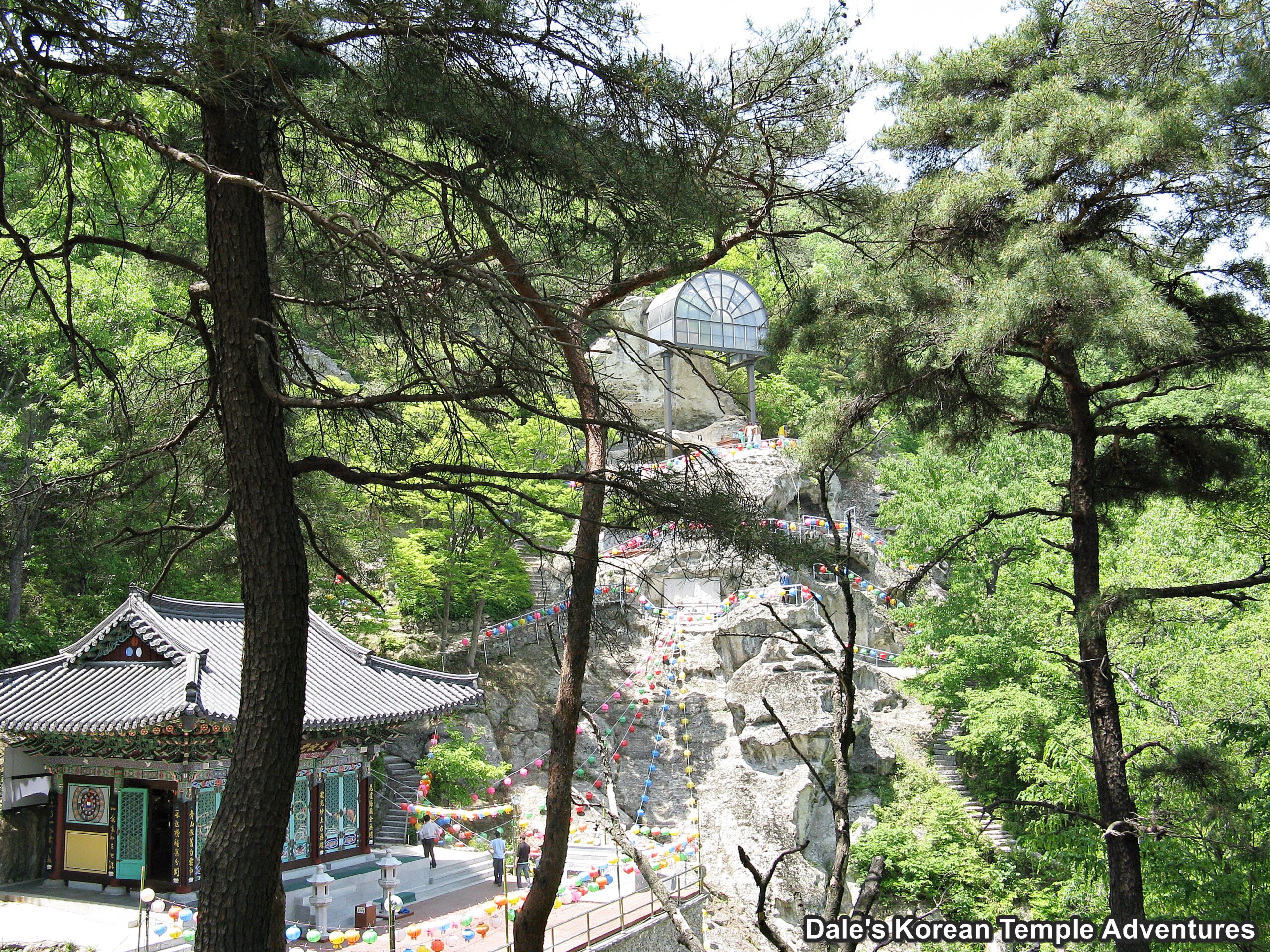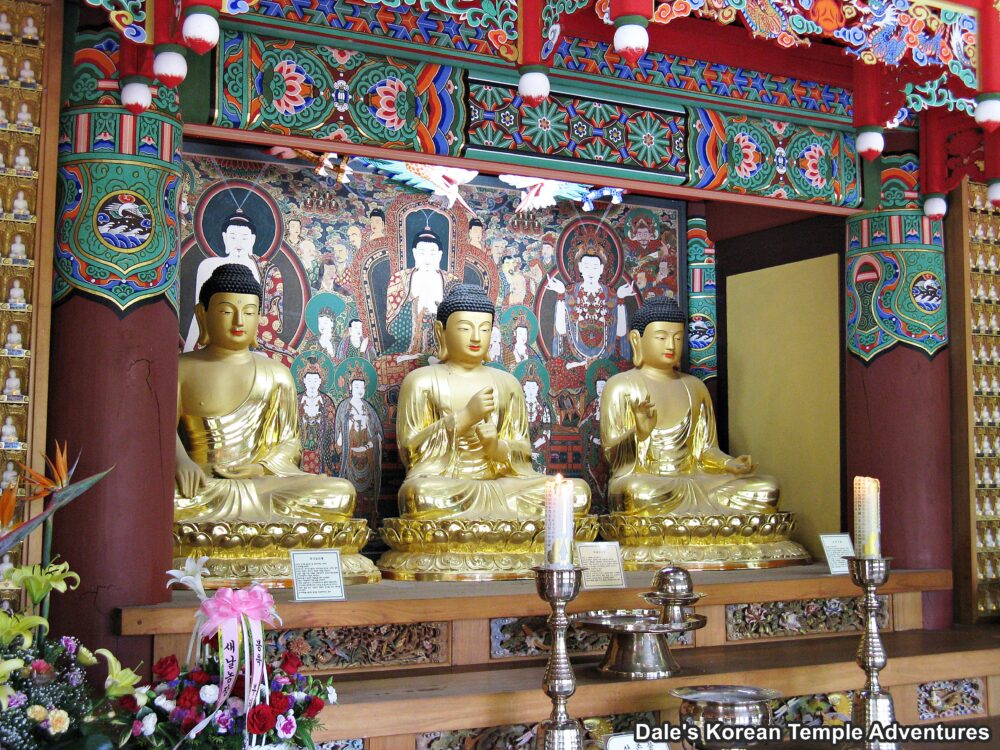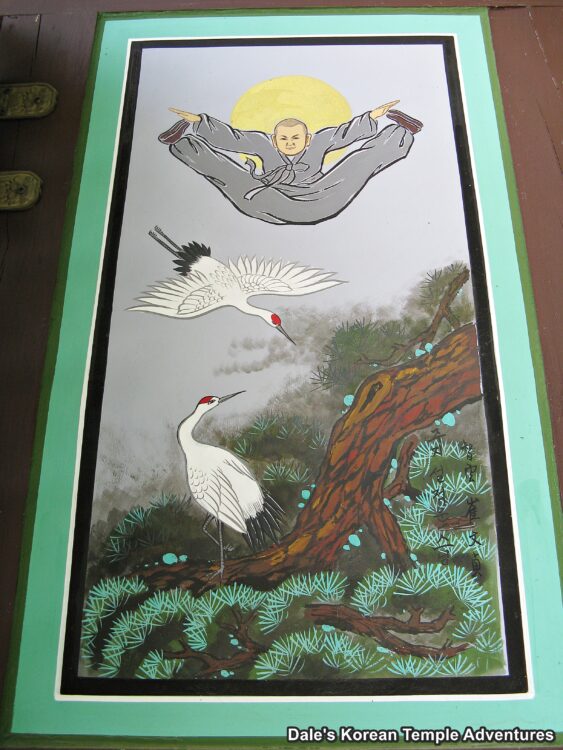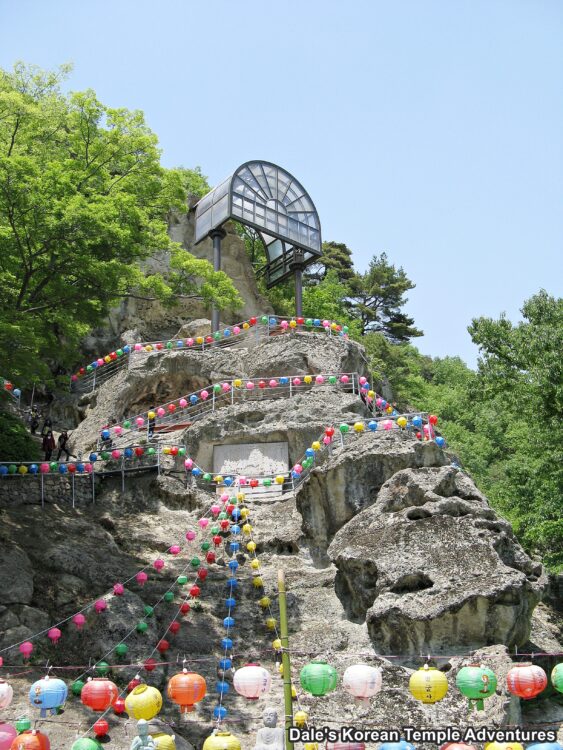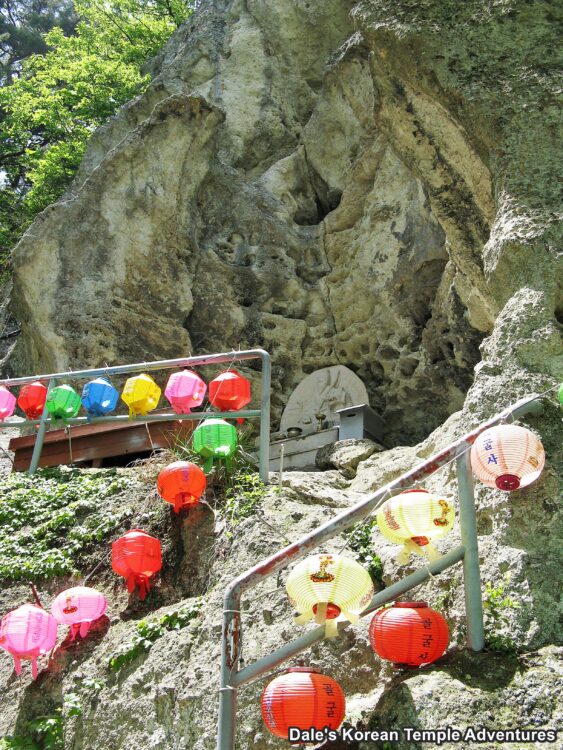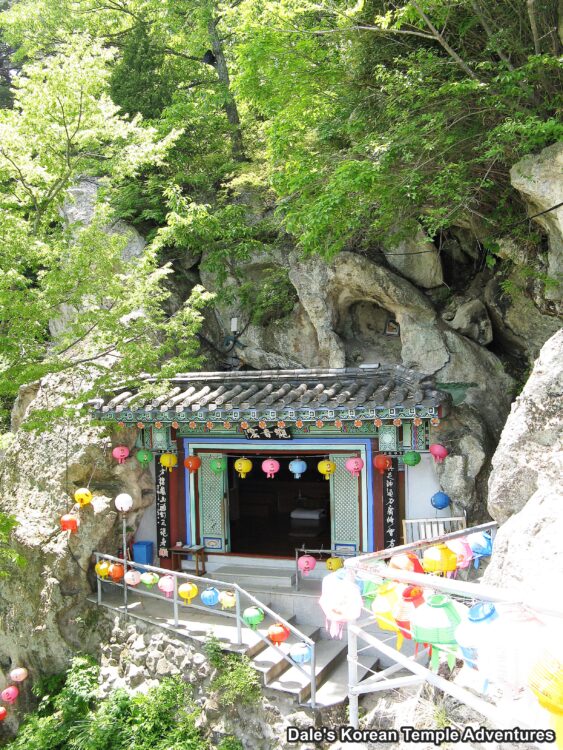Golgulsa Temple -골굴사 (Gyeongju)
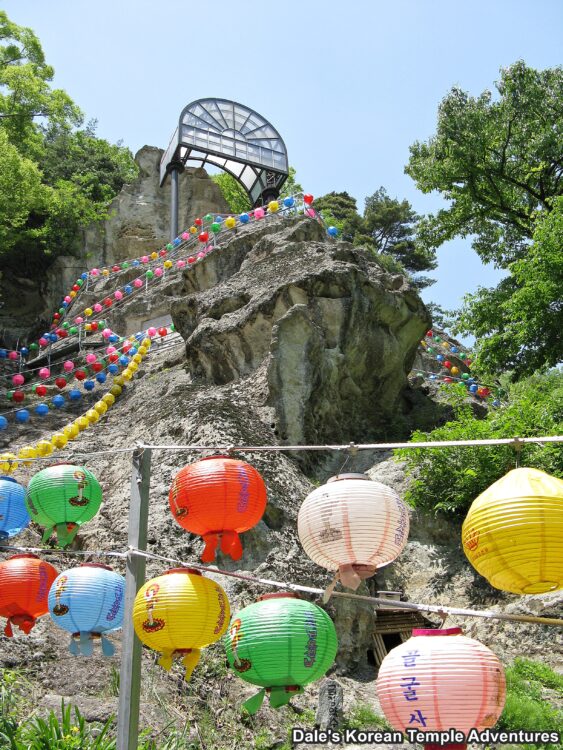
Temple History
Golgulsa Temple, which means “Bone Cave Temple,” in English, is located in eastern Gyeongju. East of Seokguram Hermitage, and over a mountain pass, you can find Golgulsa Temple to the south of the towering Mt. Hamwolsan (584 m) in a narrow valley. Golgulsa Temple was first built sometime during the 6th century by the monk Gwangyu. Gwangyu came back to Korea from India with some followers and built Golgulsa Temple to emulate the cave temples in India.
According to the painter, Jeong Seon (1676 – 1759), pen name Gyeomjae, who painted during the mid Joseon Dynasty (1392-1910), he painted Golgulsa Temple with a wooden antechamber in front of several of the stone grottoes. They were then covered with tiles. However, Golgulsa Temple was left in ruins after it was destroyed by fire in the mid to late part of the Joseon Dynasty. After seventy years, the Bak clan of Gyeongju moved into the Golgulsa Temple area and began reconstruction efforts. In 1989, Golgulsa Temple was sold to an individual. In turn, this individual sold Golgulsa Temple to Seol Jeogun, who was the former abbot of the neighbouring Girimsa Temple. During the reconstruction of Golgulsa Temple, at this time, a road was made to the temple. While the temple was once referred to as Golgulam Hermitage, Golgulsa Temple is now a fully fledged temple and registered as a branch temple of the famed Bulguksa Temple of the Jogye-jong Buddhist Order of Korea.
Golgulsa Temple is perhaps best known for continuing the practice of Seonmudo (The Way of War for the Seon). The name Seonmudo was given in 1984 by the monk Jeogun. The full name for Seonmudo is “Bulgyo Geumgang Yeong Gwan – 불교금강영관,” in Korean. Earlier in Korean history, Korean Buddhist monks were encouraged to practice Seon martial arts as a way of diversifying their meditation. In fact, Seonmudo is said to date all the way back to the Silla Dynasty (57 B.C. to 935 A.D.), when the monks Wonhyo-daesa (617-686 A.D.) and Wongwang-guksa (558-638 A.D.) taught martial arts of the mind and body to the Hwarang (Flowering Knights). The Hwarang were a group of elite warrior youths from the Silla Dynasty. The Hwarang lasted until the 10th century. Later, during the Imjin War (1592-1598), these monks used Seonmudo, as well as swords, knives and spears to help repulse the invading Japanese. Seonmudo, which is a Korean Buddhist martial arts, was passed on from generation to generation until it was eventually suppressed by the Japanese during Japanese Colonial Rule (1910-1945). During the 1930’s and 1940’s, Beomeosa Temple was rebuilt, and it was used as a centre for an underground resistance to the Japanese occupation by the Beomeosa Temple monks. Since the 19th century, Seonmudo had been neglected and nearly forgotten. Finally, and during the 1970’s, Seonmudo was revived under the watchful eye of the head monk Jeokun, a monk at Beomeosa Temple. Training people started in the 1980’s. And in 1990, a practice studio was built for monks and people to learn the ancient martial art. The central location for the training of Seonmundo martial arts is now located at Golgulsa Temple where both Buddhists and laypeople practice the ancient art form.
Golgulsa Temple is home to a very popular Temple Stay program, and it’s also home to one Korean Treasure.
Temple Layout
You first approach Golgulsa Temple off a main thoroughfare. As you start to make your way up to the temple grounds, you’ll first be welcomed by a slightly wide Iljumun Gate, or the “One Pillar Gate,” in English. To the right of the Iljumun Gate are a half dozen statues depicting various poses from the Seonmudo martial arts. And a little further along, you’ll come to the neighbouring dorms for the Temple Stay program. To the right of the dorms is the Seonmudo practice facility.
To get to the actual main temple courtyard, you’ll need to continue along a winding road that increasingly becomes more and more steep in pitch. Along the way, you’ll find a newly constructed five-story stone pagoda, a dog statue, and a statue of the jovial Podae-hwasang (The Hempen Bag). Just beyond these, and halfway to the main hall at Golgulsa Temple, you’ll find the monks dorms. It’s also from this vantage point that you’ll first encounter, off in the distance, a Plexiglas and steel semi-enclosure that houses Korean Treasure #581, the “Rock-carved Seated Buddha at Golguram Hermitage.”
A little further up the trail, and a little more out of breath, you’ll finally come to the base where the main hall is housed at Golgulsa Temple. The Daejeokgwang-jeon Hall, which acts as the main hall at Golgulsa Temple, is adorned with unusual murals around the exterior walls. Some of these murals are symbolic Seonmudo martial arts. Stepping inside the smaller sized Daejeokgwang-jeon Hall, you’ll notice a triad centred by Birojana-bul (The Buddha of Cosmic Energy). To the left sits Seokgamoni-bul (The Historical Buddha) and to the right sits Rocana-bul (Reward Body Buddha). These three Buddhas represent the three bodies of the Buddha. Birojana-bul represents the transcendence of form, which is replaced by the realization of truth (Dharma-kaya). Rocana, on the other hand, is the Buddha-body that is the “reward body” for merits earned by the Buddha as a Bodhisattva (Sambhoga-kaya). And Seokgamoni-bul is the response that was needed to teach sentient beings (Nipmana-kaya). These three bodies represent how the Buddha reveals himself in a variety of ways to people depending on their spiritual ability and capacity. Hanging on the walls, and to the right, you’ll see an intricate Shinjung Taenghwa (Guardian Mural). And on the left wall, you’ll see a mural of Wonhyo-daesa (617-686 A.D.).
In front of the Daejeokgwang-jeon Hall is a wooden platform where Seonmudo is performed twice daily once at 11 a.m. and once at 3 p.m. To the far left of this wooden platform and the main hall is a uniquely designed stone pagoda consistent with the overall theme of Seonmudo at Golgulsa Temple.
Now, having your fill of the main hall, you can head to the right up a side-winding set of stairs that pass by twelve pock-marked caves dotting the white limestone mountain face. The first thing to greet you on the face of the mountain is an installed stone relief of a Shinjung Taenghwa (Guardian Mural). And the first of these caves houses a statue dedicated to Sanshin (The Mountain Spirit). A little further up the trail, and you’ll find a shrine dedicated to Jijang-bosal (The Bodhisattva of the Afterlife). Along the way, you’ll also see a cave shrine dedicated to Yaksayeorae-bul (The Medicine Buddha), as well as a cave shrine dedicated to the Nahan (The Historical Disciples of the Buddha). At a plateau in the craggy rock face, you’ll find a shrine hall in one of the larger limestone caves. This shrine hall is dedicated to Gwanseeum-bosal (The Bodhisattva of Compassion). Sitting all alone on the uneven rock altar is a stone statue of Gwanseeum-bosal. And this statue is joined by other smaller bronze coloured images of the Bodhisattva of Compassion.
The final stretch to make it to the top where the stone relief of Seokgamoni-bul is situated on the face of the neighbouring plateau takes a bit of effort. You’ll need to pass through a limestone shaped circle. After making your way through this narrow passageway, you’ll finally be able to climb the few remaining stairs to see the seven metre tall stone carving of the Rock-Carved Seated Buddha at Golguram Hermitage, which is also Korean Treasure #581. The carving is believed to date back to the latter part of the Later Silla Dynasty (668-935 A.D.). The serene face seems to have held up a bit better to the passage of time. And around the head and body you can see the remnants of a fiery nimbus. This carving is a wonderful example of Buddhist artistry during the Silla Dynasty. While a bit tricky to get to, it’s well worth the effort to see and enjoy.
Admission to the temple is free.
How To Get There
From Gyeongju, you can board either Bus #100 or Bus #150 that heads towards Gampo. You can catch this bus across from the Gyeongju Intercity Bus Terminal. You’ll need to get off at the Andong-ri intersection and walk twenty minutes to get to the temple entrance. Just follow the signs along the way.
Overall Rating: 9/10
Golgulsa Temple is one of those temples that will blow you away. The crowning stone relief that stands above the pock-marked white limestone is truly impressive, as are the shrines and shrine halls that lead up to the stone relief of the Buddha. Also, if you go to Golgulsa Temple, you can enjoy a Seonmudo martial arts demonstration or stay for the very popular Temple Stay program at Golgulsa Temple. In fact, it’s the most popular of its kind in Gyeongju. Overall, the temple is great for traditionalists and adventure seekers.
